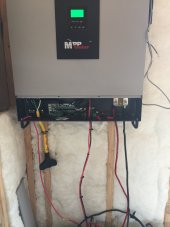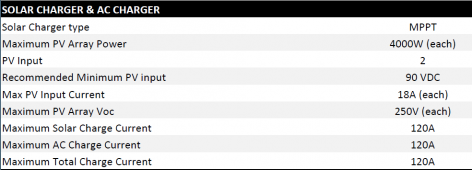Hedges
I See Electromagnetic Fields!
- Joined
- Mar 28, 2020
- Messages
- 21,043
Some inverters are batteries optional. They can power loads while the sun shines, but only if sufficient PV production, and that has to be sufficient for the much higher starting vs. running power.
Just having automotive starting or marine batteries attached would let it deliver full surge capability.
If low-voltage disconnect is set for about 80% or 90% SoC, it should avoid draining battery (but may turn back on as soon as voltage pops up under no load?) So try to set disconnect/reconnect voltages to get desired operation.
I think a big PV array and suitable inverter with small battery (hardly cycled) should work well for daytime loads.
I prefer not to have a large battery unless it is necessary to store power for when there isn't sun.
My usable kWh from battery is approximately 1 hour's PV production. (but they are deep cycle, and also sized for one night's consumption.)
Just having automotive starting or marine batteries attached would let it deliver full surge capability.
If low-voltage disconnect is set for about 80% or 90% SoC, it should avoid draining battery (but may turn back on as soon as voltage pops up under no load?) So try to set disconnect/reconnect voltages to get desired operation.
I think a big PV array and suitable inverter with small battery (hardly cycled) should work well for daytime loads.
I prefer not to have a large battery unless it is necessary to store power for when there isn't sun.
My usable kWh from battery is approximately 1 hour's PV production. (but they are deep cycle, and also sized for one night's consumption.)








